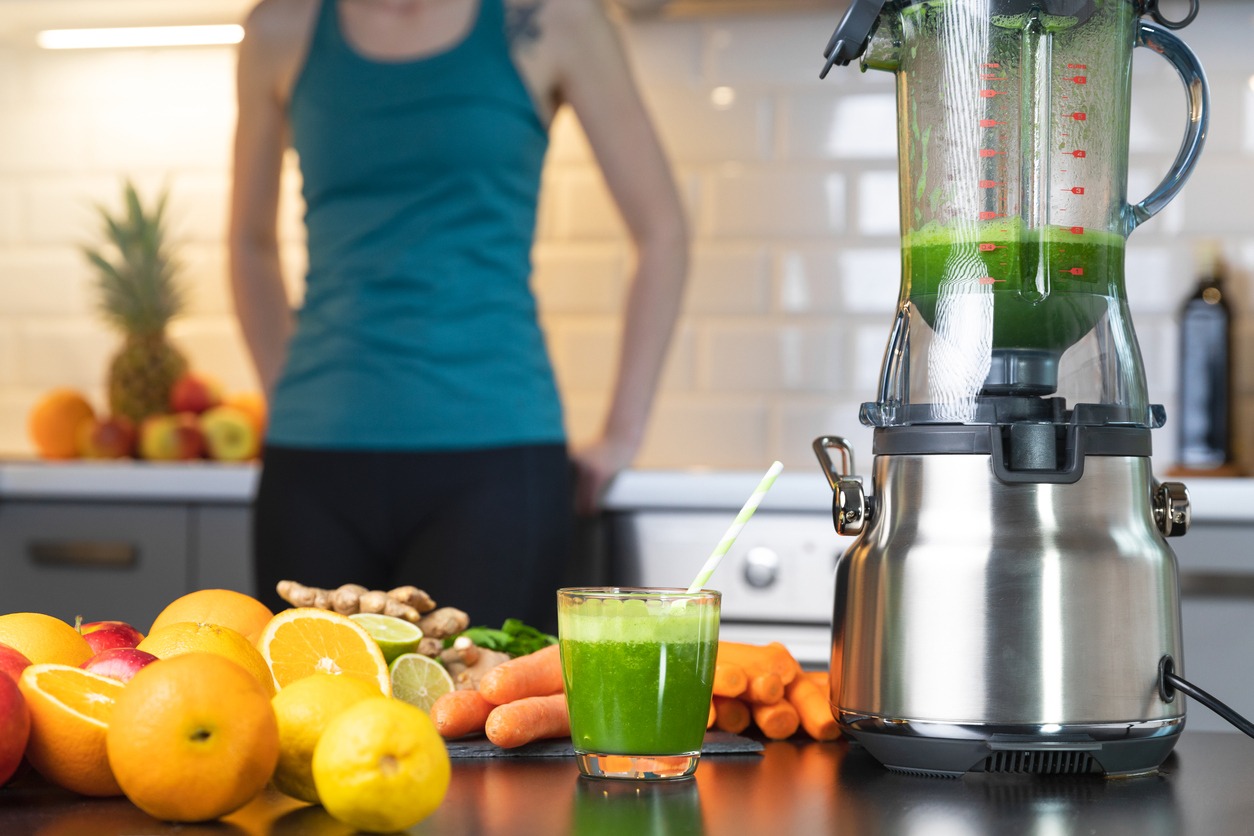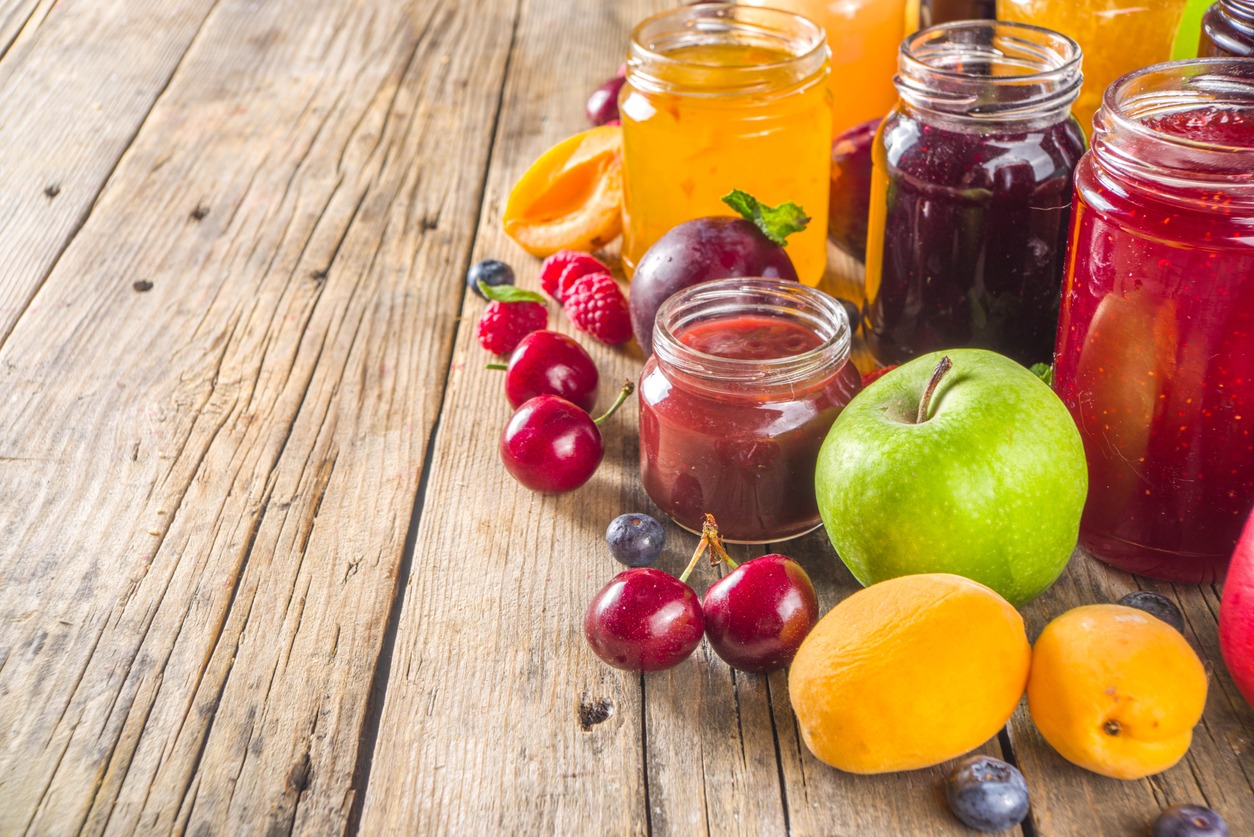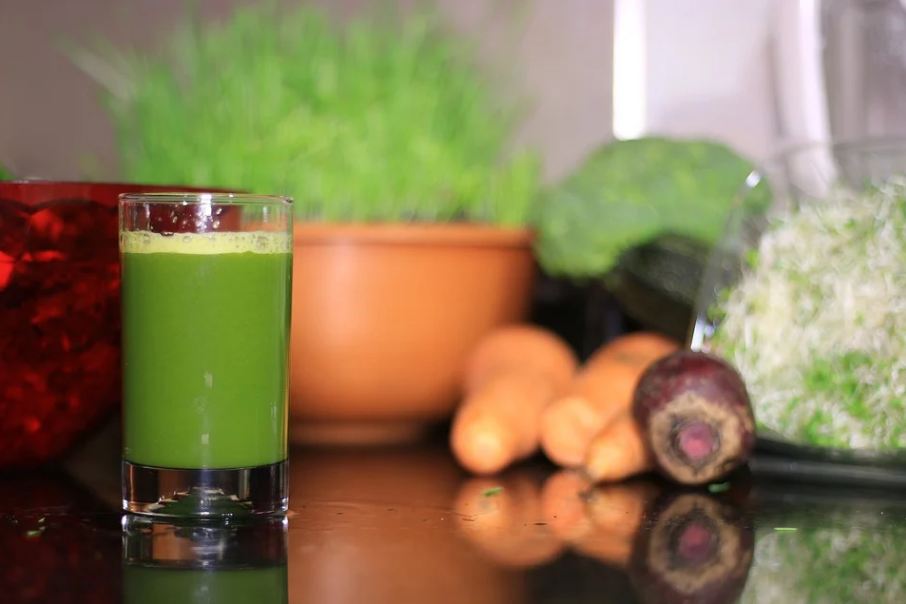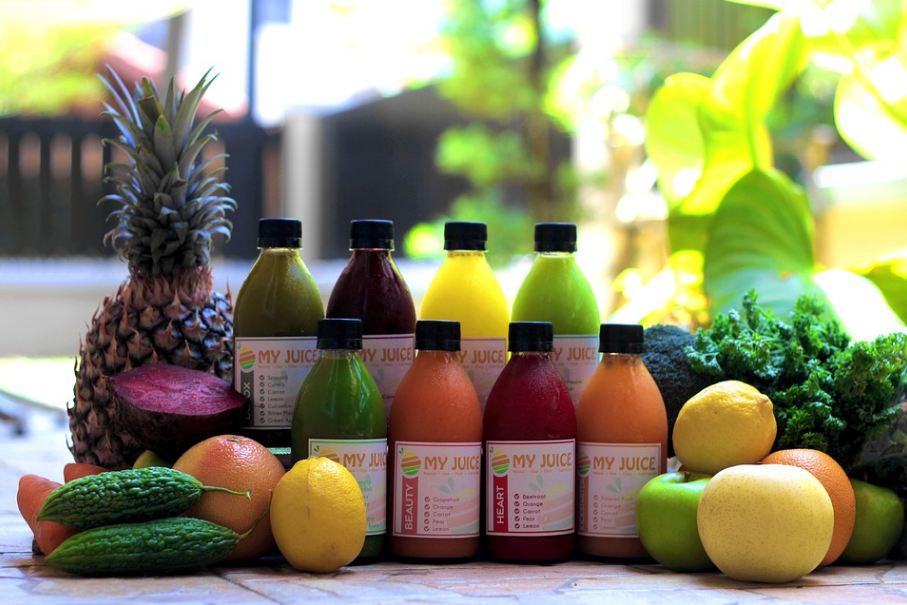Juicing Vegetables for Essential Minerals
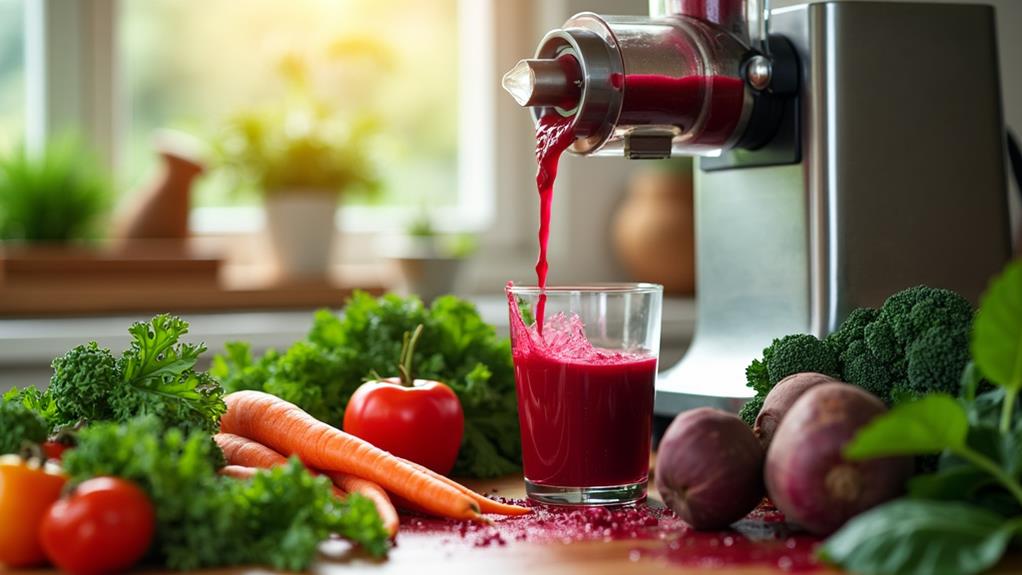
Juicing vegetables provides a concentrated source of essential minerals crucial for maintaining good health, such as iron, calcium, and potassium. But which vegetables offer the best nutrient balance? And how can you efficiently extract these minerals without compromising their potency? Addressing these questions will help you maximize the benefits of your juicing routine.
Benefits of Juicing Vegetables
Juicing vegetables offers numerous health benefits by concentrating essential minerals your body requires. Juicing vegetables like spinach, kale, and beets maximizes their rich potassium content, which is vital for heart health and muscle function. This process allows you to increase your intake of these minerals without consuming the bulk of whole vegetables.
Leafy greens, such as kale and spinach, are excellent sources of calcium and magnesium, which are crucial for bone health and muscle function. Additionally, juicing nutrient-dense options like Swiss chard and beet greens can help combat anemia due to their high iron content.
One of the key advantages of juicing is that it enhances the absorption of these minerals. The removal of fiber during juicing facilitates quicker digestion and nutrient utilization, which is particularly beneficial for those with digestive issues. Moreover, the antioxidants and phytonutrients in vegetables like carrots and bell peppers support the bioavailability of these minerals, promoting comprehensive nutrient absorption. Incorporating vegetable juices into your diet is a smart choice for your overall health.
Essential Minerals in Juices
Understanding the specific minerals in different vegetable juices can help you tailor your juicing habits for optimal health. Juicing vegetables provides essential minerals that your body needs to function effectively. For instance, potassium is abundant in cucumbers, beets, and spinach. This key mineral supports heart health and fluid balance, making these vegetables excellent choices for your juices.
Kale and Swiss chard are rich in calcium, essential for maintaining strong bones and teeth. Incorporating these leafy greens into your juices can enhance your nutrient intake effortlessly. Carrots are rich in beta-carotene, which your body converts to vitamin A, crucial for good vision and a robust immune system.
Beets are unique for their dietary nitrates, which can improve blood flow and lower blood pressure, thus benefiting cardiovascular health. Additionally, spinach is an excellent source of iron, vital for oxygen transport in the blood and preventing anemia. By understanding these key minerals, you can create juice blends that not only taste great but also boost your health.
Best Vegetables for Juicing
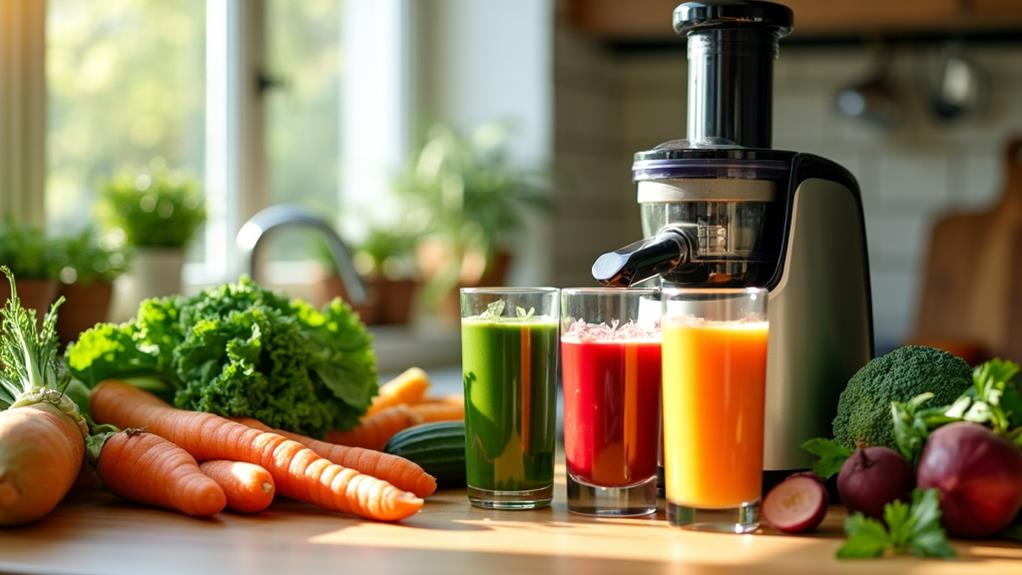
When selecting vegetables for juicing, opt for nutrient-dense leafy greens like kale and spinach due to their high mineral content. Include hydrating options like cucumbers and celery to provide essential minerals and maintain fluid balance. Root vegetables such as carrots and beets offer unique benefits, like boosting the immune system and enhancing blood flow.
Nutrient-Dense Leafy Greens
A variety of nutrient-dense leafy greens can transform your juice into a powerhouse of vitamins and minerals. Leafy greens like kale and spinach are packed with vitamins A, C, and K, which support immune function and overall health. Incorporating these greens into your juice enhances not only nutrient intake but also the flavor profile, making them a versatile addition to any blend.
Kale stands out for its high antioxidant content, helping your body combat oxidative stress and potentially aiding detoxification processes. Spinach is another excellent choice, rich in iron, which is crucial for healthy blood circulation and energy levels. If you need extra iron in your diet, spinach is a must-have in your juicing routine.
Don't overlook Swiss chard, which is rich in minerals like magnesium and potassium. These minerals are essential for muscle function and maintaining fluid balance, making Swiss chard a valuable ingredient in your juice recipes. By integrating these leafy greens into your daily juices, you're not just enhancing the taste but also significantly increasing your intake of key nutrients, supporting your path towards better health.
Hydrating Vegetable Choices
To enhance hydration and nutrient intake from your juices, incorporating vegetables like cucumbers and celery is highly effective. These hydrating vegetables contain about 95% water, providing essential hydration while delivering key nutrients that support overall health. Cucumbers offer a refreshing taste and are rich in vitamins K and C, which are beneficial for maintaining healthy skin and a robust immune system.
Celery is another excellent choice due to its high electrolyte content, which helps maintain your body's fluid balance. This makes celery juice particularly advantageous for staying hydrated and replenishing lost minerals. Both cucumbers and celery are low in calories, so you can enjoy generous servings in your juice without worrying about excessive calorie intake.
Benefits of Root Vegetables
Root vegetables like carrots and beets are nutritional powerhouses, making them excellent choices for juicing. Carrots are rich in essential minerals such as potassium, magnesium, and iron, which support muscle function and oxygen transport. Additionally, they are high in beta-carotene, an antioxidant that the body converts to vitamin A, crucial for healthy vision and a strong immune system.
Beets, another valuable root vegetable for juicing, are significant sources of dietary nitrates. These compounds can enhance blood flow, reduce blood pressure, and boost exercise performance. Incorporating beets into your juice not only offers these health benefits but also adds a natural sweetness, eliminating the need for added sugars.
Juicing root vegetables provides a concentrated dose of these vital nutrients, significantly contributing to your overall nutrient intake. When combined with ingredients like leafy greens and hydrating vegetables, you create a nutrient-dense beverage that is both delicious and health-promoting. Including root vegetables in your juicing routine ensures a flavorful way to meet your nutritional needs.
Juicing Methods and Tools
When selecting the optimal method for juicing vegetables, you have several options, including juicing machines, blenders, and manual juicers. Each tool comes with its own set of advantages and disadvantages. Additionally, it's crucial to thoroughly clean your equipment to ensure your juice remains safe and delicious.
Types of Juicers
Choosing the right juicer is crucial for maximizing nutrient extraction from your vegetables. Different types of juicers cater to various needs and preferences, ensuring optimal nutrient retention from your produce.
Centrifugal juicers use fast-spinning blades to extract juice quickly, which is convenient but may generate heat, potentially degrading some nutrients. Masticating juicers, however, operate at slower speeds, preserving more vitamins and enzymes due to minimal heat production. Cold-pressed juicers go a step further by using hydraulic pressure to minimize oxidation and maximize nutrient retention.
Manual juicers, like citrus juicers and handheld presses, are effective for specific fruits and do not require electricity, making them ideal for those who prefer a hands-on approach.
Here's a quick comparison:
| Juicer Type | Key Feature | Best For |
|---|---|---|
| Centrifugal Juicer | Fast extraction, generates heat | Quick vegetable juices |
| Masticating Juicer | Slow, nutrient-preserving | Whole foods, leafy greens |
| Cold-Pressed Juicer | Hydraulic pressure, minimal oxidation | Maximum nutrient retention |
When selecting a juicer, consider ease of use, cleaning requirements, and the types of produce you plan to juice. Certain models perform better with specific vegetables, ensuring optimal results.
Blending Vs. Juicing
Blending and juicing are popular methods for incorporating more vegetables into your diet, each with its distinct benefits. Blending retains the entire vegetable, including pulp and fiber, essential for digestive health. In contrast, juicing extracts liquid from vegetables, removing the fiber.
For juicing, masticating juicers are ideal as they operate at low speeds, minimizing heat and oxidation, thus preserving more nutrients compared to traditional centrifugal juicers. Cold-pressed juicers are especially effective for extracting juices from leafy greens and fibrous vegetables.
Blending offers the advantage of retaining fiber, which supports digestion and aids in nutrient absorption. When choosing between blending and juicing, consider your health goals. If you seek a fiber-rich option for digestive health, blending is preferable. If you prefer a nutrient-dense liquid without pulp, juicing is a quick and efficient solution.
Proper Cleaning Practices
Ensuring proper cleaning practices when juicing is essential for both health and taste. Start by thoroughly washing your vegetables under running water to remove dirt, pesticides, and bacteria. For firm-skinned vegetables like carrots and cucumbers, use a vegetable brush for extra cleanliness, ensuring you start with the cleanest produce possible.
Next, focus on your juicing machine and other equipment. Immediately after use, clean your juicers, blenders, and cutting boards with hot soapy water. This step is crucial to prevent bacterial growth and maintain the hygiene of your tools. Be sure to disassemble your juicing machine to clean all parts thoroughly.
For an extra level of cleanliness, consider soaking your juicing tools in a solution of water and a small amount of vinegar or bleach for at least 10 minutes before rinsing well. This sanitizing step can help eliminate any remaining bacteria.
Nutrient Retention in Juices
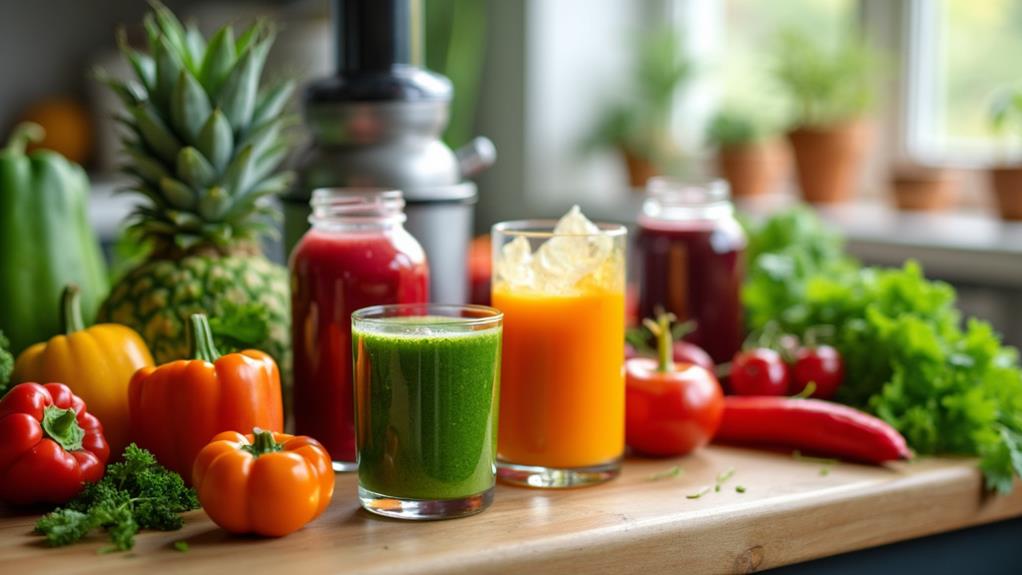
The method of juicing significantly affects nutrient retention. Using a cold-pressed juicer preserves more vitamins and minerals than a traditional centrifugal juicer. Cold-pressed techniques minimize heat and oxidation, maintaining the nutrients in fresh vegetables.
It's essential to use fresh, raw vegetables for juicing. Cooking or storing vegetables for long periods can reduce their vitamin and mineral content. Exposure to light and oxygen can degrade nutrients, particularly vitamin C and some B vitamins. To maximize nutrient retention, consume your juice immediately after preparation.
Juicing a variety of vegetables enhances mineral retention, as different vegetables offer diverse nutrient profiles. However, juicing can still result in the loss of up to 50% of certain vitamins during extraction. By carefully choosing your juicing method and ingredients, you can optimize the nutritional benefits of homemade vegetable juices.
Comparing Juices and Whole Foods
When comparing juices and whole foods, each offers unique benefits and drawbacks. Juicing provides a quick way to consume concentrated vitamins and minerals but removes the essential fiber that supports digestive health. The absence of fiber can lead to rapid sugar absorption, causing blood sugar spikes.
In contrast, whole foods offer a broader spectrum of health benefits. They retain natural fiber and phytonutrients, which can help prevent chronic diseases and promote satiety. Consuming whole vegetables can help you feel fuller for longer, reducing the risk of overeating.
Here's a quick comparison to help you decide what's best for you:
| Aspect | Juicing | Whole Foods |
|---|---|---|
| Fiber Content | Low | High |
| Nutrient Density | Concentrated | Diverse |
| Digestive Health | Can cause blood sugar spikes | Supports digestive health |
While juicing may seem convenient, it's important to remember that nutrient absorption doesn't significantly exceed that of whole foods. Some nutrients are better absorbed with their natural fiber, making whole foods a more balanced choice for long-term health.
Safety Tips for Juicing
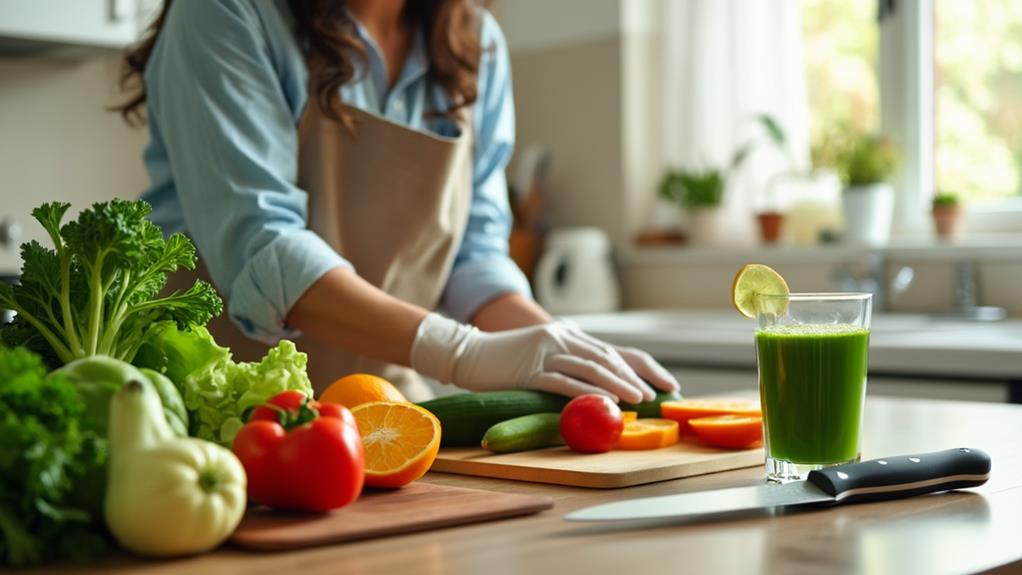
Juicing vegetables can be a nutritious and enjoyable way to boost your intake of essential vitamins and minerals. However, it's crucial to follow safety guidelines to mitigate potential health risks.
First, thoroughly wash vegetables to remove dirt, pesticides, and harmful bacteria. This step is vital to prevent foodborne illnesses.
Next, ensure your juicing equipment is clean and sanitized before and after each use. Proper equipment maintenance prevents cross-contamination and extends the lifespan of your juicer, safeguarding the quality and safety of your juice.
Consume freshly made juice immediately or store it in an airtight container in the refrigerator to minimize bacterial growth and preserve nutrient quality. If you are at a higher risk for foodborne illnesses, consider using pasteurized commercial juices, which are safer from harmful pathogens.
Lastly, avoid juicing high-risk vegetables like raw sprouts, which can harbor bacteria. Opt instead for safer choices like carrots and leafy greens. By adhering to these safety tips, you can confidently enjoy the nutritional benefits of juicing.
Potential Risks of Juicing
Juicing vegetables can seem like a quick path to better health, but it's crucial to be aware of the potential risks involved. One significant concern is the removal of fiber, essential for digestive health. Without fiber, you might experience issues like constipation and increased hunger. Additionally, juice cleanses often lack critical nutrients such as protein and healthy fats, leading to nutritional deficiencies.
Another risk is the rapid absorption of sugars from juices, which can cause spikes in blood sugar levels. This can increase your risk of insulin resistance and type 2 diabetes. Prolonged juicing can also result in fatigue and mood swings due to inadequate calorie and nutrient intake, negatively affecting your energy levels and mental health.
Moreover, freshly made juices can harbor harmful bacteria if not consumed promptly, posing a risk of foodborne illnesses, especially for high-risk individuals.
Summary of Risks:
| Risk | Impact |
|---|---|
| Fiber removal | Digestive issues, increased hunger |
| Nutrient deficiencies | Lack of protein, healthy fats |
| Rapid sugar absorption | Blood sugar spikes, diabetes risk |
| Inadequate calorie intake | Fatigue, mood swings |
| Bacterial contamination | Foodborne illnesses |
These points highlight the importance of balanced nutrition when considering juicing as part of your diet.
Maximizing Juice Quality
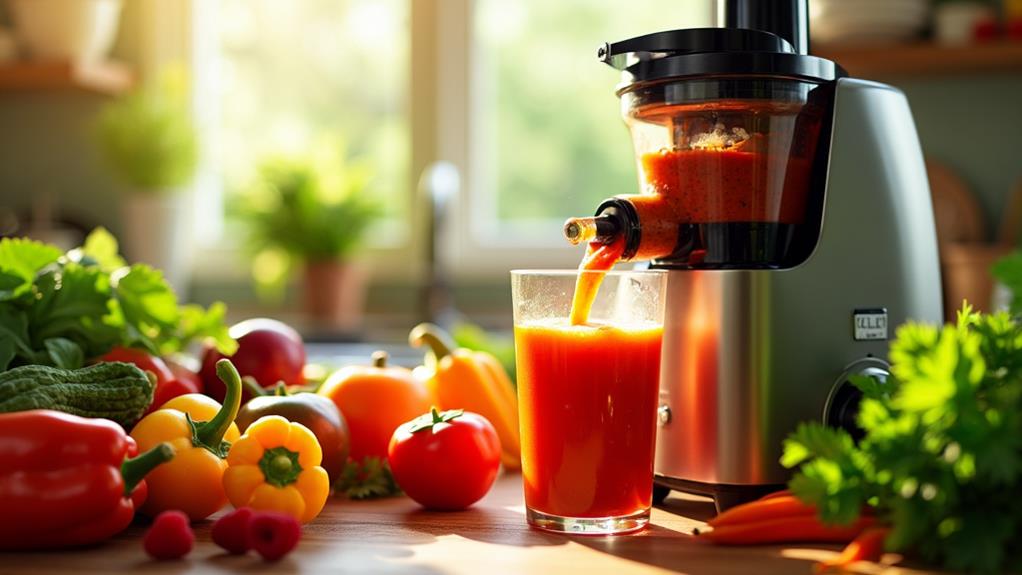
Maximizing juice quality involves making informed choices that preserve nutrients and enhance flavor. Start by opting for cold-pressed or slow masticating juicers, which minimize heat generation and better retain nutrients compared to centrifugal juicers.
Consume your fresh juice immediately to maintain its nutrient content and prevent bacterial growth. Exposure to light and oxygen can quickly degrade nutrients, so drinking it right away is best.
Choosing organic vegetables can significantly improve juice quality by reducing pesticide exposure and providing a purer taste and nutrient profile. Incorporate a variety of colorful vegetables to enhance flavor and ensure a broad spectrum of vitamins, minerals, and antioxidants.
If you need to store homemade juice, use airtight containers and refrigerate. For optimal nutrient retention, consume stored juice within 24 hours. These steps will help you enjoy the highest quality juice possible.

